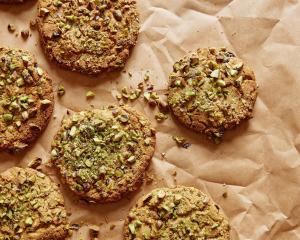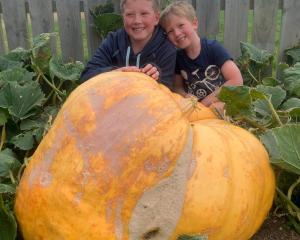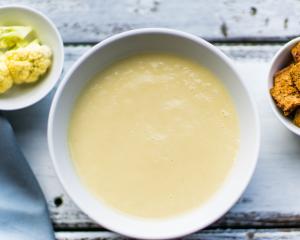With the Port Chalmers Seafood Festival on this weekend, the focus is on the sea's bounty. Rebecca Fox asks Pier 24 head chef Greg Piner, one of the festival's demonstration chefs, to share some tricks of the trade for dealing with seafood.
Holding a side of fresh yellowfin tuna, chef Greg Piner could not be more excited.
The tuna had just arrived from Fiji, only just over a day old, ready for Piner and his team at Pier 24 to work their magic.
Working with quality, fresh ingredients such as the tuna, and the best salmon and oysters that could be found in New Zealand was one of the joys of his job as head chef at the seaside restaurant, he said.
But it also came with challenges - especially the pressure to get it right.
They were expensive ingredients which were also quite delicate to cook so there was little room for error, he said.
''We have standards, and if we do not meet those standards, there is trouble. Our customers want the best, pay the best so we have to deliver.''
It is a goal he has sought to achieve all his working life, since starting his training in a Greymouth kitchen when he was 15 years old.
Asked what it was that attracted him to the job, he could not say.
''I enjoy the people I work with. You're only as good as the team around you.''
Like most chefs, he did some travelling before settling back in New Zealand, choosing Queenstown, where he worked at Millennium, Blanket Bay and the St Moritz.
Looking for a change, he headed to Auckland where he worked for top chef Warwick Brown.
He came to Dunedin to work with Michael Coughlin in his new kitchen, Pier 24, five years ago.
Coughlin moved on to Olivers in Cromwell and Piner took charge of the kitchen.
Like any chef, his hardest tasks are to keep ahead of the trends and keep the customers happy.
That means being aware of trends for gluten-free food, paleo diets and concerns about how far food has travelled.
''At Blanket Bay, we had customers who would only eat food that had grown in the sun.''
Pier 24 has its own smoker - they have to call the fire brigade whenever they light it as people think the restaurant is on fire.
Perched on the veranda, it had most recently been put to use smoking almonds for yellowfin tuna dish that would be on the night's menu.
''Smoked almonds go wonderfully with tuna.''
They would also pair the tuna with with prawns and a curry sauce on their lunch menu.
Many people had no idea of the amount of work that went into creating what arrived on their table, Piner said.
That hard work was also turning a lot of young people off looking at becoming a chef as they did not want to work weekends or nights.
''It's a dying art.''
But when he steps out of Pier's kitchen, that is the end of cooking. His wife does the cooking at home - ''she keeps it simple and fresh'' - although he does admit to a ''manly'' love affair with his Webber barbecue, saying the experience of firing it up, putting a chicken on and waiting a couple of hours for it to cook is just something else.
Greg's clams recipe
Ingredients
1 shallot (finely diced)
4 garlic cloves (finely diced)
1 red chilli (finely diced)
50gm fennel bulb (finely sliced)
100ml verjuice
100ml cream
5ml oil
12 clams or more depending on how many you can eat
Method
Heat oil in pan and add shallot mixture.
Once you have a little colour, turn element up to high, add clams and verjuice, cover and steam.
Once clams have opened add cream and reduce for flavour.
You can add a little bit of lemon at the end, but not before as it will split the cream.
Tip: Only use fresh clams. If the clam is open, tap it and if it closes, it is okay. If it doesn't don't use it. Also, if a clam doesn't open after cooking don't eat it.
Filleting a salmon or other similar fish
Greg's favourite ways to cook salmon are to marinate it in a maple sauce, then smoke it or sous vide it and then grill it lightly to get some colour.
To fillet a salmon, you will need. -
A large sharp knife, dry hands and a tea towel (to keep your hands dry).
Tips
• Have a light hand and do not overcook it.
• Remember seafood is expensive, so make it the hero of the dish
• Keep it simple
1) Lay the fish down with its back towards you.
Holding the fish flat on a board with one hand, cut down behind the gills to the bone.
2) Turn the knife to about a 20deg angle and work it along the backbone of the fish, down to the tail.
3) Turn the fish over and do the same again. This side can be more difficult.
4) With the knife at an angle, carefully cut out the ribcage bones.
5) Use a dessert spoon to scoop out any leftover fish from around the spine - use as pizza topping or tartare.











